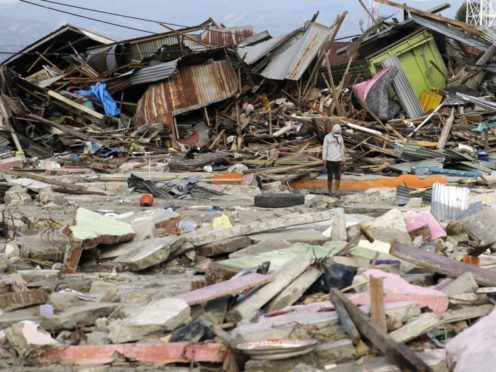A Dundee University expert has said early warning systems designed to warn Indonesians about earthquakes and tsunamis may not have worked as intended.
More than 1,600 people died when a devastating tsunami hit Indonesia after an earthquake in the city of Palu.
Hundreds more people are still unaccounted for.
Sue Dawson, a reader in physical geography at Dundee University, said an early warning system created after the 2004 tsunami had failed to “live up to expectations”.
Writing in The Conversation, the lecturer said: “After the much larger tsunami that devastated countries around the Indian Ocean in 2004, Indonesia began installing a new early warning system to try to prevent such widespread destruction from happening again.
“So why is the country once again facing such a severe loss of life? The location of the tsunami may have made the destruction particularly acute, but the country’s early warning system also appears not to have lived up to expectations.”
Tsunamis occur when the sea floor is disturbed by an event such as an earthquake, underwater landslide or volcanic eruption.
As the waves approach the shore they slow down and pile up in height. The giant waves can then cause devastation when they crash onto land.
Ms Dawson said: “Unfortunately it isn’t possible to predict exactly when a tsunami may strike a coastal area, but there are clues that can save lives.
“Indonesia’s main early warning system is made up of a network of tidal gauges that measure sea level, and land-based stations that detect earthquake activity.
“However, the tidal gauges were so far away from Palu that they only registered a small rise in the water level as the waves started to form.
“It’s possible the system wasn’t set up to take into account how the waves would grow as they travelled down Palu’s bay.”
She said that more advanced warning systems, using a series of buoys to detect seafloor movement, are used in other parts of the world.
Ms Dawson added: “Indonesia has installed a new sea-based system but some researchers have said that it is stuck in the testing phase, and that the ocean buoys deployed aren’t working properly.
“They point to a potential life-saving early warning system hampered by lack of funding and delays, despite the very real threat from tsunamis in this part of the world following the 2004 event.
“There may have also been a problem with the way the information about the incoming waves was used. The Indonesian authorities in this case did issue a tsunami warning via text message, but the earthquake destroyed many cellphone towers.
“Unfortunately, Sulawesi has paid the price for an incomplete tsunami warning system as well underestimating the wave heights that actually struck the coastline.”










